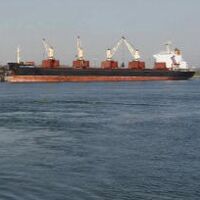
China Adds Port to Latin American Investments
China has added one more acquisition to its sizeable collection of critical ports in Latin America.
After several months of delay, a Chinese company took over the management of Ecuador’s Manta port, the second-largest in the country, in February. The contract went to Chinese front company Hutchinson Whampoa, which agreed to spend about us$460 million to upgrade the port.
“The ultimate impact,” writes BusinessWeek.com, “is that a Hong Kong conglomerate will have control of one of Ecuador’s economic lynchpins” (February 8). Through Hutchinson, China already controls a number of strategic ports in Latin America including the ports at each end of the Panama Canal, the Buenos Aires Container Terminal in Argentina, the international terminal at one of the most important ports on Mexico’s Pacific coast, a large port on Mexico’s Atlantic coast, and two ports in the Bahamas.
So why is it that Latin American countries are allowing the Chinese to make such inroads? The answer is money. China is investing massive amounts of money in Latin America—particularly in the development of natural resources, including oil. In 2003, Latin America accounted for almost half of China’s overseas investments. Just how much money is at stake was revealed in the fact that Ecuador actually changed national laws to allow China to put in its bid for the 30-year contract for control of Manta’s port.
Clearly, it is a mutually beneficial arrangement: In return for its investments, China is gaining control of ports and much-needed resources such as iron ore from Brazil and oil from Venezuela. Beijing’s strategy is to secure sources for critical resources and the ability to transport those resources back to China. Toward this end, China has recently opened a shipping route across the Pacific linking several ports in China with ports in Mexico, Colombia, Ecuador, Peru and Chile. In addition, Beijing is seeking to control the ships themselves; China is currently the world’s fourth-largest shipbuilder, with the aim to be world number one within the next three years.
China is not without competition in Latin America, however. Europe has been busy over recent years making inroads, particularly economically. What is building is a massive contest for resources—a battle that Latin American countries will find themselves caught in the middle of. Read “The Battleground” for details on how this future struggle for resources, already beginning, will play out.
